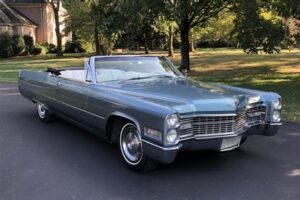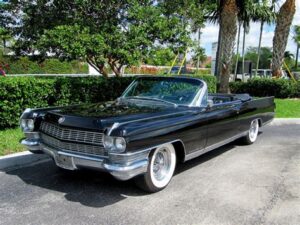How to Bypass Cadillac Converter
In the world of automotive maintenance, understanding the intricacies of your vehicle’s components can be critical, especially when it comes to the Cadillac converter. This essential part plays a pivotal role in reducing harmful emissions and ensuring optimal performance. However, issues can arise that may lead owners to consider bypassing it altogether. This article aims to provide an informative guide on the basics of Cadillac converters, how to identify potential problems, and safe techniques for bypassing them. We also delve into the legal implications and potential risks involved in this practice, equipping you with the knowledge needed to make informed decisions. Whether you’re a car enthusiast or just looking for solutions, join us as we navigate this complex topic with clarity and expertise.
Understanding The Basics Of Cadillac Converters
A Cadillac converter, often simply referred to as a catalytic converter, is a crucial component of a vehicle’s exhaust system. Its primary function is to reduce harmful emissions from the engine, converting toxic gases into less harmful substances before they are released into the atmosphere. Understanding the basics of Cadillac converters is essential for anyone considering maintenance or modifications to their vehicle.
These converters are typically located in the exhaust system, positioned between the engine and the muffler. Inside the converter, a chemical reaction occurs, thanks to precious metals like platinum, palladium, and rhodium, which act as catalysts. This process transforms harmful exhaust emissions, such as hydrocarbons, carbon monoxide, and nitrogen oxides, into carbon dioxide and water vapor.
Regular functioning of the Cadillac converter is essential not only for compliance with environmental regulations but also for vehicle performance. A malfunctioning converter can lead to decreased fuel efficiency, increased engine load, and a host of other issues. This is why it’s vital to recognize symptoms of a failing converter early on, as proper identification can pave the way for effective solutions.
A Cadillac converter plays a critical role in reducing the environmental impact of vehicles and ensuring they operate efficiently. For anyone looking to delve into modifications or repairs, understanding the fundamental workings of Cadillac converters is an imperative first step.
How To Identify A Problematic Cadillac Converter
Identifying a problematic cadillac converter is crucial for maintaining optimal vehicle performance. Here are some key signs that indicate your cadillac converter may be failing:
| Symptoms | Description |
|---|---|
| Check Engine Light | A persistent check engine light may indicate issues with your converter. Use an OBD-II scanner to check for trouble codes. |
| Decreased Fuel Efficiency | If you notice a significant drop in fuel efficiency, it might be due to a clogged cadillac converter hindering exhaust flow. |
| Unusual Noises | Hearing rattling or clunking sounds from underneath your vehicle could signify a failing converter. This is often due to internal damage. |
| Performance Issues | Struggling to accelerate or reduced engine power can indicate excessive back pressure from a malfunctioning converter. |
| Unpleasant Odor | A strong smell of hydrogen sulfide or rotten eggs can signal a failing cadillac converter, often due to improper combustion. |
If you encounter any of these symptoms, it’s important to investigate further. How to check these signs effectively can help you determine if your cadillac converter needs repair or replacement. Regular maintenance and prompt attention to these indicators can prevent more severe issues and prolong the lifespan of your vehicle’s exhaust system.
Techniques For Bypassing Your Cadillac Converter Safely
Bypassing a Cadillac converter can be tempting for those dealing with performance issues or seeking increased engine efficiency. However, it is essential to approach this process with caution to avoid damaging your vehicle or violating environmental regulations. Here are some techniques for safely bypassing your Cadillac converter:
- Research Local Laws: Before attempting any modifications, make sure you are fully aware of the legal implications in your area. Some regions have strict regulations concerning emissions systems.
- Consult a Professional: If you’re uncertain about the process, seek help from a qualified mechanic who specializes in exhaust systems. They can provide insights on the safest methods to achieve your goals without harming your vehicle.
- Use a Quality Test Pipe or H-Pipe: Instead of completely removing the converter, consider installing a test pipe or H-pipe. These components can redirect exhaust flow and improve performance while allowing for easier reconversion later on.
- Retain the O2 Sensors: If bypassing the Cadillac converter, ensure that you do not remove the O2 sensors. These sensors play a critical role in monitoring your vehicle’s emissions and performance.
- Install a High-Performance Muffler: Upgrading to a high-performance muffler can elevate your car’s exhaust tone and improve flow without needing to bypass the Cadillac converter entirely.
- Regular Maintenance: Keep your vehicle well-maintained. Regular inspections and maintenance can prevent issues that may make bypassing the converter seem necessary.
By focusing on safe and legal alternatives, you can enjoy improved vehicle performance while also being responsible and compliant with local environmental standards. Always prioritize safety and legality when considering how to modify your vehicle’s exhaust system.
The Legal Implications Of Bypassing A Cadillac Converter
When considering how to bypass a Cadillac converter, it’s crucial to understand the legal landscape surrounding this practice. In many regions, removing or altering the exhaust emissions system, including the Cadillac converter, is illegal. This is primarily because the Cadillac converter plays a vital role in reducing harmful emissions and ensuring that vehicles comply with environmental regulations.
In the United States, the Environmental Protection Agency (EPA) has strict regulations that prohibit the modification of emissions control systems. Bypassing a Cadillac converter can lead to significant fines and penalties for vehicle owners. Additionally, some states have their own specific laws that further regulate modifications to vehicle exhaust systems, often requiring vehicles to pass emissions testing. Failure to comply with these laws can result in the vehicle being deemed unroadworthy.
Furthermore, if a vehicle is found to have an improper emissions system, insurance companies may refuse to cover damages, and vehicle registration can be revoked. It is essential to research your local laws and consult with a legal expert before proceeding with any modifications that involve the Cadillac converter.
While the knowledge of how to bypass a Cadillac converter may be useful from a technical perspective, the legal ramifications can be severe. Understanding and adhering to the laws in your jurisdiction is paramount to avoid potential legal consequences.
Potential Risks And Consequences Of Bypassing Cadillac Converters
Bypassing a Cadillac converter can seem like an enticing option for some vehicle owners seeking immediate engine performance improvements or cost savings. However, this action carries several risks and potential consequences that must be carefully considered.
First and foremost, it’s essential to acknowledge that bypassing a Cadillac converter can significantly impact your vehicle’s emissions output. Cadillac converters play a crucial role in reducing harmful emissions; therefore, removing or altering them can lead to increased pollution. This not only negatively affects the environment but also may result in hefty fines if your vehicle fails emissions testing.
Additionally, how to bypass a Cadillac converter can lead to severe engine damage. The improper functioning of exhaust systems can cause back pressure issues that may harm engine components over time. This can result in costly repairs that would far outweigh any short-term savings gained from bypassing the converter.
Another significant risk is the potential for legal repercussions. Many regions enforce strict regulations regarding vehicle modifications. Bypassing a Cadillac converter may lead to legal troubles, including fines, penalties, and possibly more severe consequences depending on local laws. Vehicle owners might also find it challenging to sell or trade their cars in the future, as buyers often prefer vehicles that comply with emissions standards.
Furthermore, insurance complications might arise. In some cases, if an accident occurs and it is discovered that emissions control systems have been tampered with, insurance companies could deny claims based on policy violations.
While the motivation to bypass a Cadillac converter might stem from a desire for enhanced vehicle performance or cost efficiency, these actions come with serious risks. It’s crucial to weigh these consequences thoroughly and to consider exploring lawful alternatives for improving vehicle performance without compromising environmental integrity or legal compliance.
Frequently Asked Questions
What is a catalytic converter and why is it important?
A catalytic converter is an essential component of the exhaust system in vehicles that helps reduce harmful emissions by converting pollutants into less harmful substances. It is important for environmental protection and compliance with emission regulations.
What are some common reasons people attempt to bypass their catalytic converter?
Common reasons include a desire for increased performance, to avoid the cost of repairs, or to circumvent emission testing. However, bypassing a catalytic converter is illegal and can lead to severe penalties.
What are the legal implications of bypassing a catalytic converter?
Bypassing a catalytic converter is illegal in many regions, as it violates emission control laws. Offenders may face fines, penalties, and the potential for the vehicle to not pass emissions testing.
Can bypassing a catalytic converter negatively impact my vehicle’s performance?
Yes, bypassing a catalytic converter can lead to poor engine performance, increased emissions, and potential damage to the engine or exhaust system due to improper airflow.
What are the environmental impacts of removing a catalytic converter?
Removing a catalytic converter increases the emission of harmful gases such as carbon monoxide, hydrocarbons, and nitrogen oxides into the atmosphere, which contributes to air pollution and poses health risks.
Are there alternatives to bypassing a catalytic converter for performance improvements?
Yes, alternatives include upgrading to high-performance catalytic converters, optimizing fuel mixtures, or tuning the engine for better performance without violating emission standards.
What should I do if my catalytic converter is faulty?
If your catalytic converter is faulty, it is best to consult a qualified mechanic for repair or replacement options, rather than attempting to bypass it, to ensure your vehicle remains compliant with regulations and performs efficiently.





